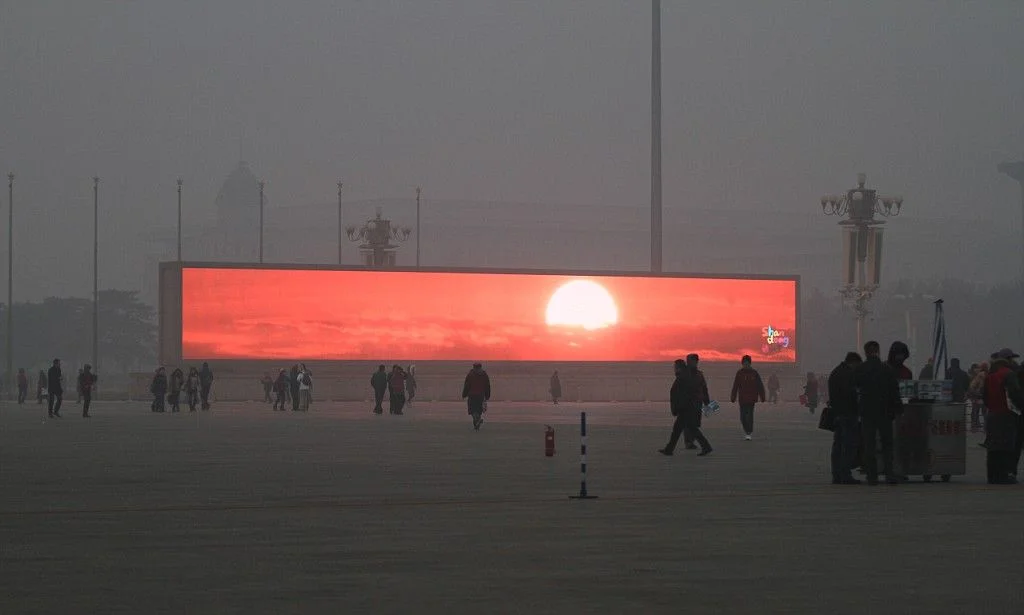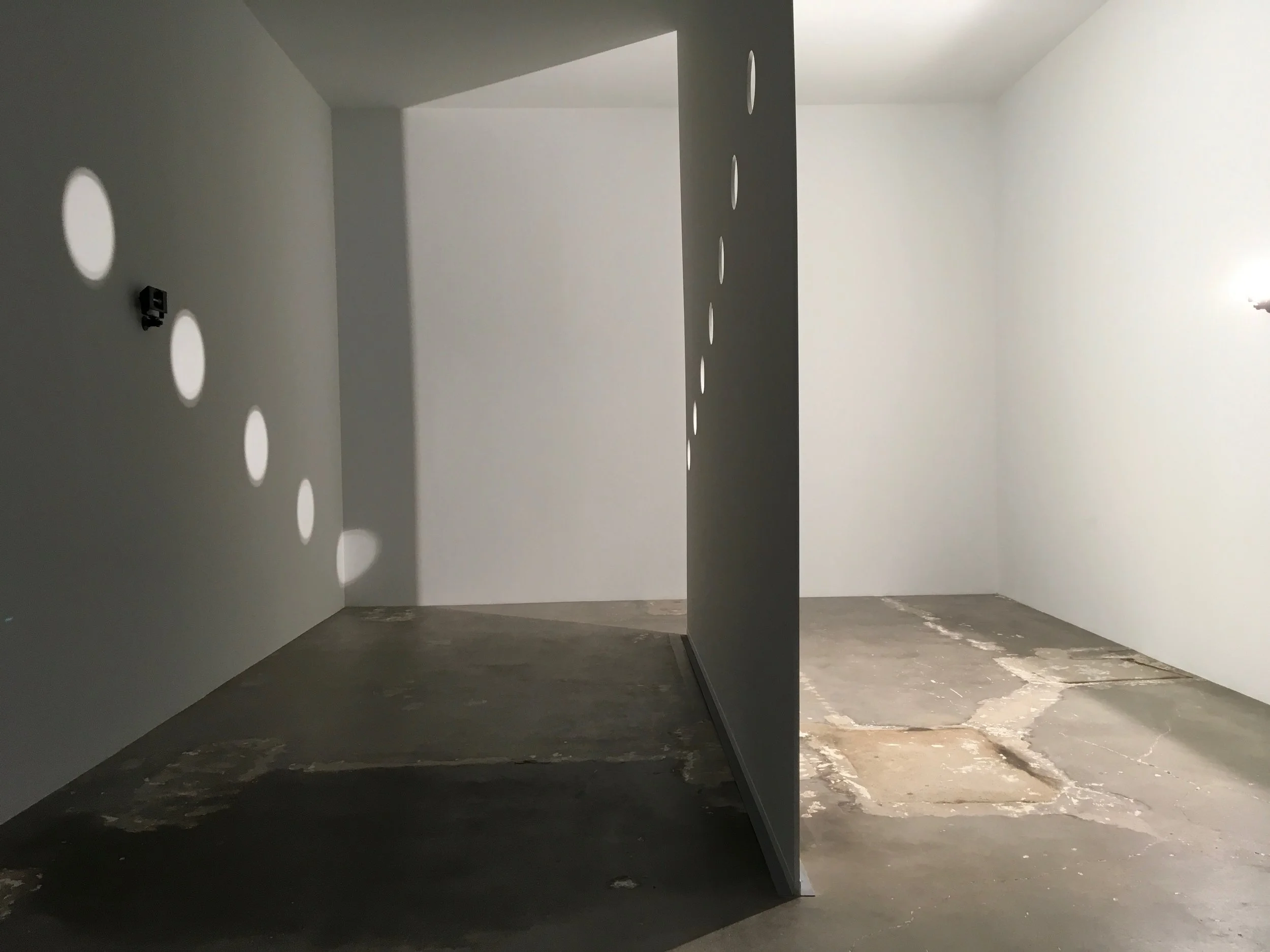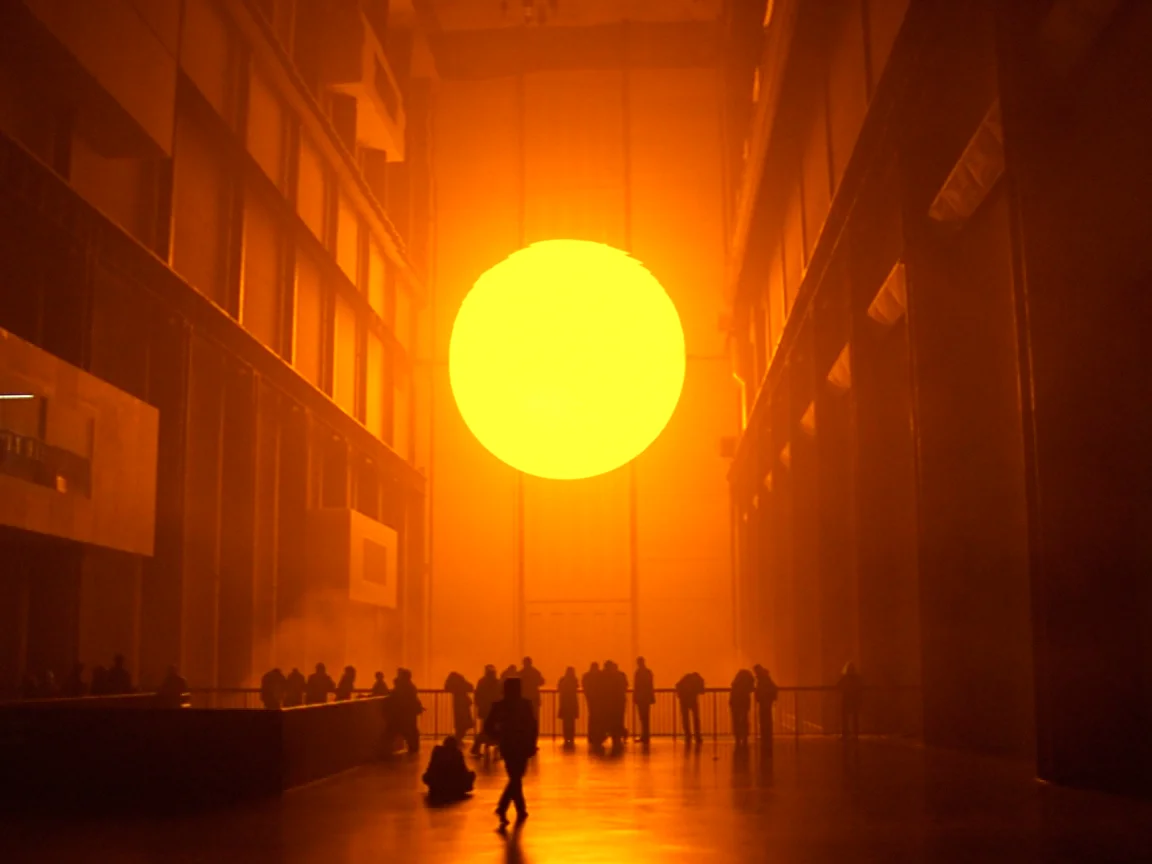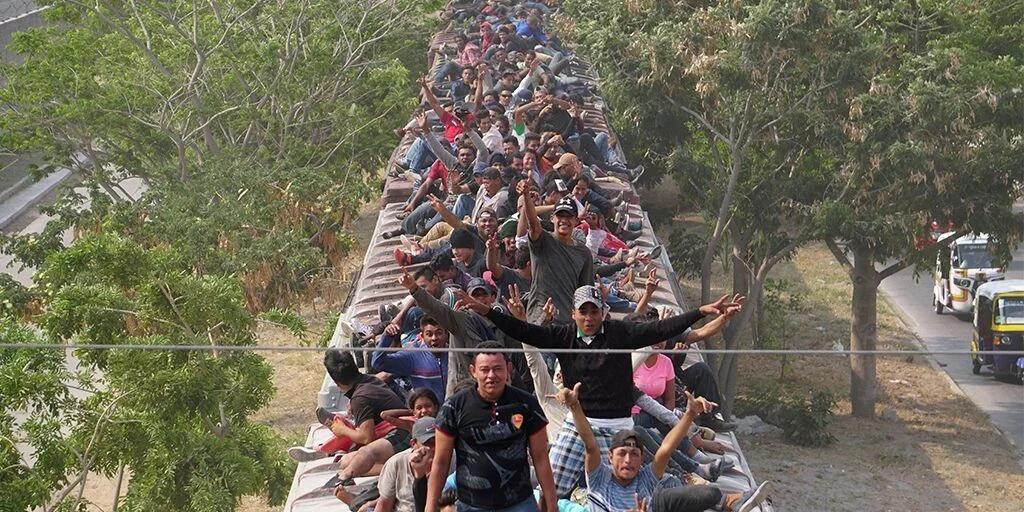Projection & Lighting Design
Prologue
In our production, projections and lighting serve to differentiate between fantasy and reality, memory and the present. At the beginning of the opera, the Little Prince dreams of flocks of sheep in fields and then in cages. These dreams are projected onto the set, spanning the upstage wall and the side walls. Upon waking, the lights snap on and the images of the sheep shift to the small television screen high above the set.
Sunsets
When the Prince describes the sunsets on his home planet, nature briefly intrudes into the sterile world of the waiting room. In a moment of magical realism, the sun peeks through the room’s porthole windows, transforming the back wall into a glorious sunset. We drew inspiration from large LED screens in screens in Beijing's Tiananmen Square that often depict nature scenes, as well as Olafur Eliasson’s installation, “The Weather Project.”
The Baobabs
When the Baobabs enter the space, the lights shift dramatically, pulling us out of real time and into a memory. Projections cover the walls, imitating the Baobabs’ tattoos and graffiti tags. After the Prince regains his courage, he and the Pilot clean up the space, washing the ink-like projections away and restoring the light.
Please Draw Me a Sheep
Throughout the show, projection and lights allude to Antoine de Saint-Exupéry’s original drawings. When the Prince asks the Pilot to draw him a sheep, the sketches and boxes the Pilot draws on paper are mirrored by projections on the set.
The Rose
As the story progresses, the Prince’s narrative moves into the realm of memory and flashback. When the Prince describes his asteroid and the Rose he cares for, the world transforms in a burst of color inspired by Mexican Otomi embroidery and the textile work of Las Hormigas Bordadoras de San Francisco Tanivet, or The Embroidery Ants of San Francisco Tanivet, a group of women from San Francisco Tanivet, a small village located in the valley of Oaxaca about 40 miles east of the state capital, who have developed a unique art form from appliqué and patchwork to tell their stories of migration and farming, on recycled cloth.
The Cranes
Throughout the production, projections serve to remind the audience of the world outside the theater with stark images and videos from migrants’ journeys to the United States. Act Two begins with footage of La Bestia ("The Beast"), the dangerous network of Mexican freight trains that are utilized by U.S.- bound migrants to more quickly traverse the length of Mexico. In our production, the flock of migrating Cranes the Prince uses to fly from planet to planet become these trains.
The Rose Garden
At the start of Act Two, the Prince arrives on “Planet Earth,” which we situate at the border between the United States and Mexico. The Prince stumbles upon a beautiful Rose Garden, which reminds him of his beloved Rose who he left behind. The imagery for our Rose Garden, projected onto the fence bisecting the set, is inspired by efforts to beautify the border fence on the Mexican side of the border and the activist work of international street artists to erase the border.
THE Snake
As the Prince wanders across Earth, he encounters a serpentine border vigilante based off of the unauthorized civilian paramilitary group, Arizona Border Recon, which is made up primarily of veterans and former lawn enforcement personnel. The snake is first seen across the border, his image multiplied and distorted through video feedback to obscure his size and numbers. Later, the snake is revealed in person as not just a single person but the head of a large armed civilian group.
THE Well
Towards the end of the opera, the Prince and Pilot encounter a well. As they look into it, the water reflects the stars and night sky above. This imagery is also inspired by the optical illusions created by Mexican American artist Ruben Ochoa.


















